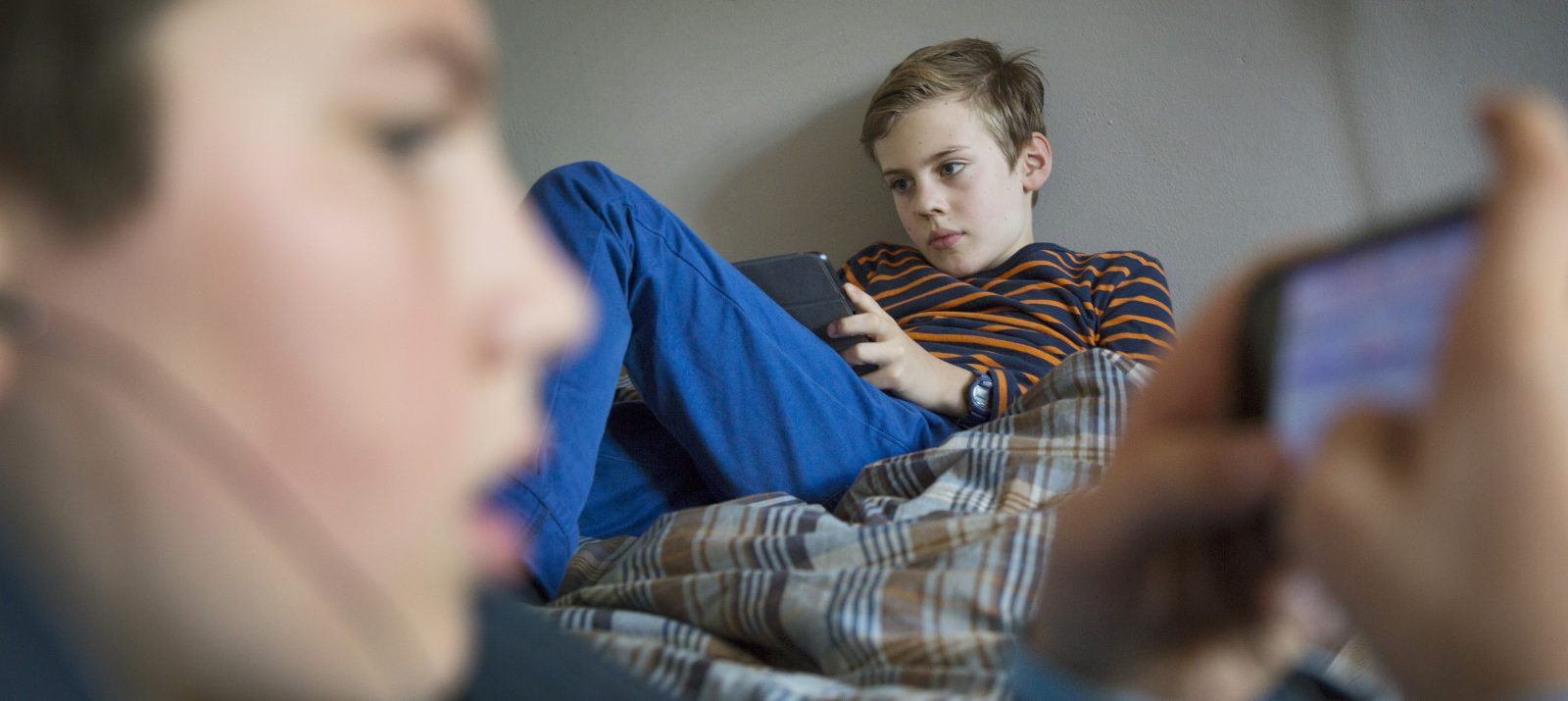
You as parents care for your children and want to protect them from bad influences. Did you know that our basic law also helps you with this?
It stipulates that the state must protect the personal rights of all people. In the case of children and young people, this includes protecting them from media influences that could be bad or dangerous for their development. The precise regulations governing the protection of minors from harmful media are set out in various laws, primarily the Protection of Minors Act and the Interstate Treaty on the Protection of Minors from Harmful Media.
The Basic Law also states that you, as parents, ultimately decide what is best for your child. This means that parents are also allowed to give their children access to media contrary to the rules of youth media protection. For you, then, the protection of minors from harmful media is an aid that you can use as a guide when it comes to dealing with media in the family.
As a guiding framework, the protection of minors in the media has guidelines that media creators and retailers are expected to follow. At the same time, they are also helpful for families. These include, for example, the age ratings for media that have been familiar for decades from the cinema sector, but which also exist for DVDs and computer games. The intended age ratings are “released without age restriction”, “from 6”, “from 12”, “from 16 years” and “no youth rating”. On television, age ratings can be identified by an announcement like this one: “The following program is not suitable for children or young adults under the age of 16.”
It is important to note that age ratings are not age recommendations. “Free from 12 years” does not mean that a computer game is particularly suitable for twelve-year-olds, but merely that the game does not impair or endanger the development of this age group.
In the family, you can use the age ratings for movies or computer games very well as a conversation starter to discuss with your children what they like about a medium and how they deal with difficult content. Such conversations give you a chance to see what is actually overwhelming your child or scaring him or her, and then you can respond accordingly.
The protection of minors from harmful media is more difficult on the Internet than in other media, because the Internet is a global medium whose content cannot be adequately controlled by national laws. Filter programs block content harmful to minors on home devices. However, there is no one hundred percent protection. In addition, other risks such as communication between users are not adequately covered. Filtering programs can therefore help family Internet use, but you should not rely on them exclusively. Be sure to learn the safety and age settings of offers and services such as search engines, video platforms or within apps and use them appropriately for your child’s age. If you come across illegal Internet content or content that is harmful to minors, you can report it to the FSM complaints office. Staff will review these for a possible violation and take the necessary action.
It is helpful to introduce children to suitable and age-appropriate Internet offerings and to guide them in finding such offerings themselves. Children’s search engines such as blinde-kuh.de and fragFINN.de are a great help here. Especially in families with younger children, it is advisable to set up one of the children’s search engines as the start page, so that after starting the browser, children are in a familiar environment where they can independently search for age-appropriate pages. Recommendation services for pedagogically tested children’s sites such as gutes-aufwachsen-mit-medien.de, klick-tipps.net or seitenstark.de are also good starting points for parents and children to find safe and pedagogically valuable offers on the Internet.